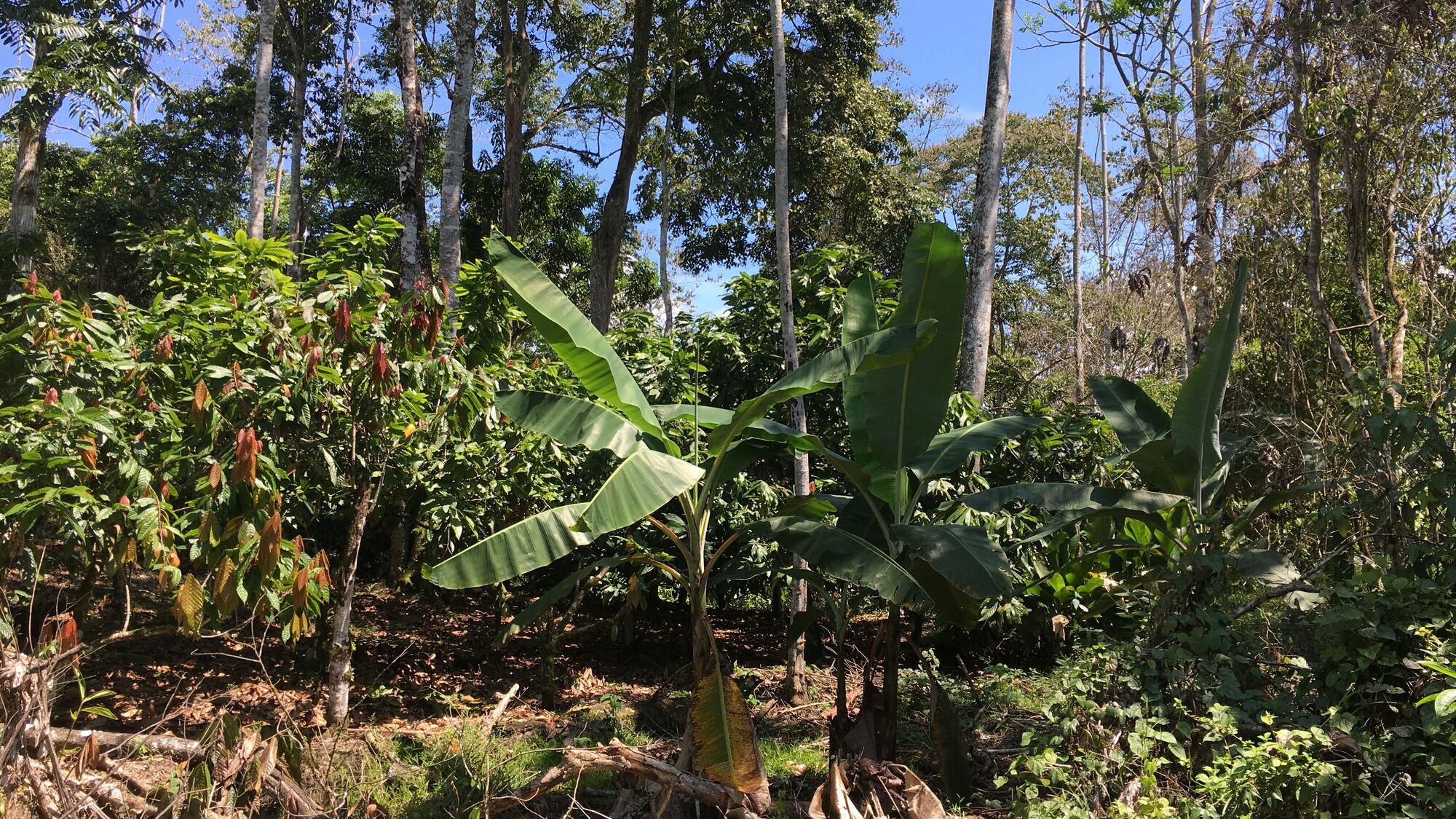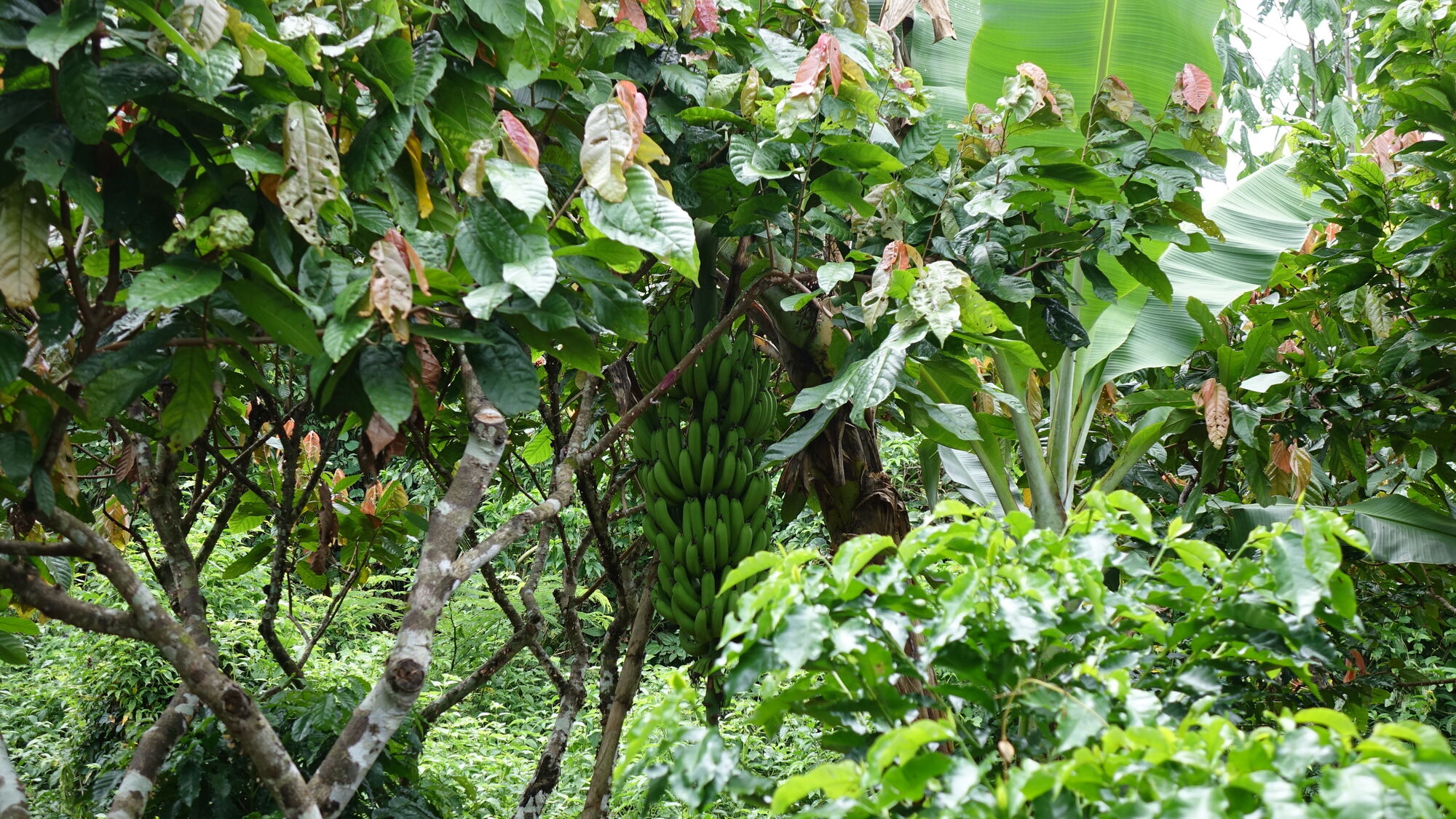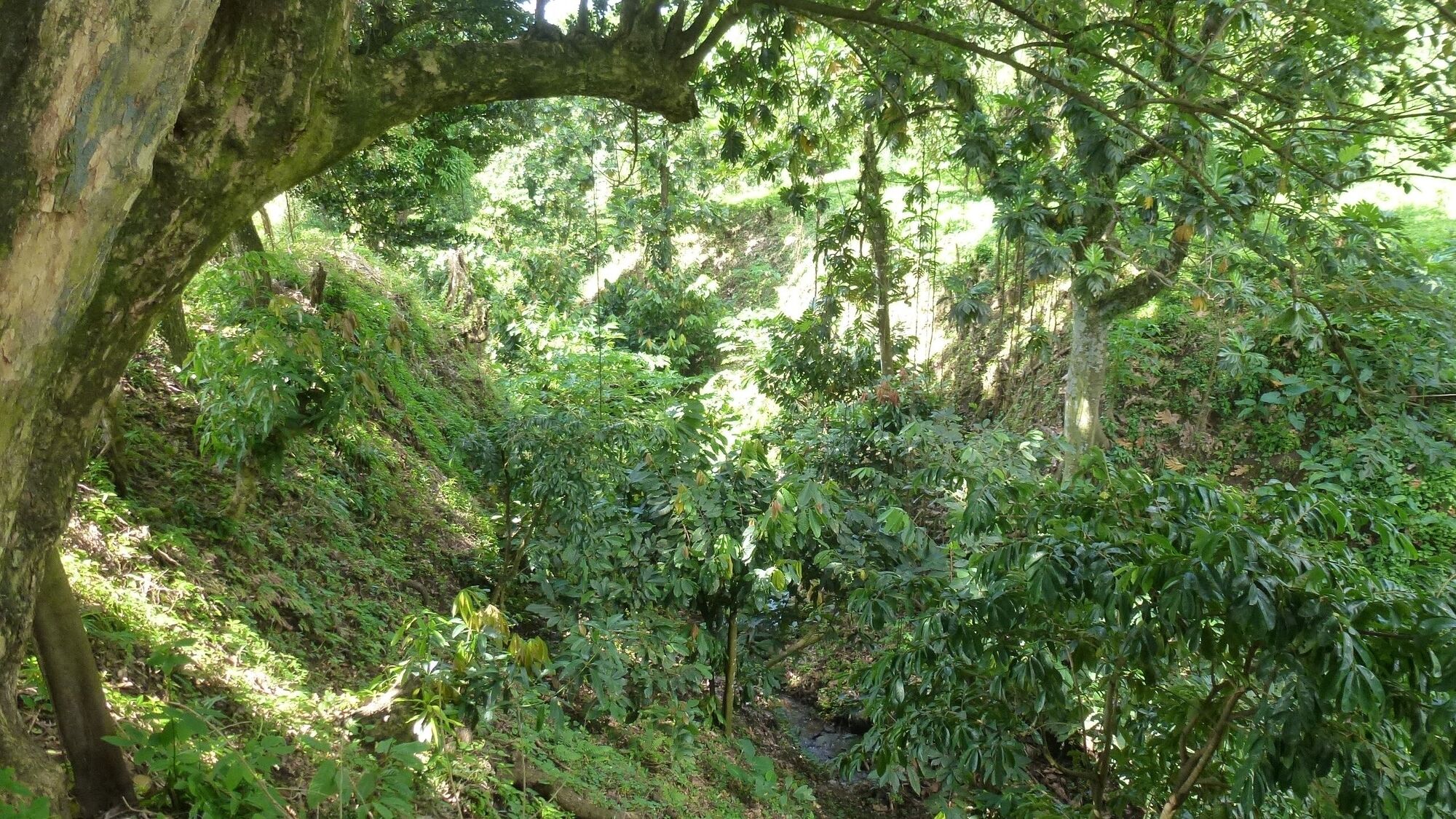Climate, forest and agroforestry
Cocoa farming is often carried out at the expense of the environment and biodiversity. The members of the Swiss Platform for Sustainable Cocoa are therefore committed to a deforestation-free and climate-friendly cocoa supply chain.
What is it about?
Cocoa needs a warm and humid climate to grow. These conditions are found in the tropical areas along the equator, where cocoa is mainly grown by smallholder farmers. Often, however, they have little or no access to agricultural inputs and insufficient knowledge about sustainable cocoa farming. This leads to overaged plantations and monocultures, poor land management, high pesticide use, increasing pest and disease pressure, and a decline in productivity of the plantations after a few years, for example due to degraded soils. To access fertile soils and secure their income, producers are often encroaching on new areas, including forests. The expansion of new agricultural land makes cocoa one of the biggest drivers of agricultural deforestation worldwide, along with cattle farming, palm oil, soy, rubber and coffee.
Deforestation and land-use change also affect local microclimates and causes carbon emissions that contribute to climate change. Climate change, in turn, is leading to more extreme weather events such as prolonged high temperatures, shifting rainy seasons and the occurrence of droughts, which are making cocoa cultivation increasingly difficult. The consequences of climate change are already being felt and today's cocoa-growing areas could potentially no longer be suitable for growing cocoa within the next 30 years – unless the necessary measures to adapt to climate change are taken in due time.
A diverse and resilient cultivation system is therefore crucial. Such an approach is, for example, an ecologically diverse agroforestry system. In contrast to monocultures, it includes many different plant species. This has the advantage that trees and plants benefit from each other by providing shade or enriching the soil with nutrients. It also leads to less pesticide use and promotes biodiversity. An agroforestry system also has advantages for cocoa farmers on an economic level. It allows them to grow additional crops suitable for self-consumption or sale, which contributes to their household income and food security. It is therefore essential to support cocoa farmers in converting to sustainable production systems to strengthen the viability of cocoa cultivation in the future.
The Goals of the Cocoa Platform according to the Roadmap 2030
In the area of climate, forest and agroforestry, our revised Roadmap 2030 (adopted in June 2025) outlines three distinct but interconnected ambitions:
Ambition 3: No Deforestation – Forest Restoration
Cocoa production does not contribute to deforestation and actively supports the restoration of degraded forest ecosystems.
- Members ensure that 100% of cocoa in their supply chain is deforestation-free by 2030.
- Members engage in or support forest protection and restoration, especially through landscape initiatives in high-risk areas.
- The cost of compliance with traceability requirements should not be passed on to farmers.
Ambition 4: Agroforestry
Agroforestry practices are widely adopted in cocoa production.
- Members support the establishment of agroforestry systems tailored to local contexts.
- Depending on ambition levels, systems range from basic (min. 16 multi-purpose trees/ha) to dynamic agroforestry (multistrata, >10 species, biomass trees, and cover crops).
- Agroforestry contributes to income diversification and climate resilience.
Ambition 5: Climate Action
Cocoa production aligns with achieving global climate goals through reducing emissions by 2030 and reaching net zero by 2050.
- Members report on actions to reduce greenhouse gas emissions, with a special focus on Scope 3.
- Higher levels include establishing cocoa-specific emission footprints and committing to science-based targets.
SWISSCO members support these ambitions through:
- Participation in joint landscape projects,
- Promotion of traceability systems,
- Adoption and scaling of climate-smart farming,
- Collaboration with governments and local actors,
- Consistent monitoring and reporting using established tools (e.g. GHG Protocol).
This integrated approach enables cocoa production that respects forests, restores ecosystems, and contributes to climate mitigation and adaptation.
Promotion of landscape approaches
Stakeholders of the Swiss cocoa industry and other international companies and partners are called upon to promote sustainable cocoa cultivation at a regional level instead of only focusing on the direct supply chain in the cocoa sector.
This recognises that challenges such as deforestation, biodiversity loss, child labour and rural and social development are best addressed on a larger scale – across entire regions as well as individual provinces or municipalities. To this end, the members of the platform work in the projects with a wide range of actors, such as farmer cooperatives, local civil society and municipal or national authorities. The orientation towards common sustainability goals is central to this.
Learn more about landscape approaches
In the area of climate, forest and agroforestry, the aim is to ensure that problems such as deforestation are addressed holistically and are not shifted from cocoa to other raw material supply chains. In addition to measures against deforestation, the project also promotes climate-friendly cultivation methods and the use of innovative investment models, for example through carbon credits.
Selected projects in climate, forest and agroforestry
Various members of the Cocoa Platform are implementing projects to promote a deforestation-free and climate-neutral cocoa value chain. These projects received a contribution from the State Secretariat for Economic Affairs (SECO) thanks to the mediation of the Coordination Office.
Sankofa Project
The project partners promote climate-smart agriculture in Ghana through a multi-stakeholder approach, thereby scaling-up previous efforts towards income diversification, climate resilience and biodiversity conservation. Learn more about the project

The Cavally Landscape Project
This project aims to preserve the biodiversity of one of Côte d’Ivoires’ last remaining dense forests - the Cavally forest - which is under threat from cocoa and rubber smallholders, living mostly at the periphery of the forest reserve, who encroach on the protected area looking for fertile soils in which to establish new plantations. The project does so through enhancing farmers’ resilience and improving cocoa and rubber supply chain transparency. Learn more about the project
Climate resilient cocoa landscape in Madagascar
This project aims to collectively engage the local stakeholders in developing a sustainably managed landscape in the Sambirano Valley. It promotes a locally appropriated mix of on and off-farm interventions to preserve ecosystem functions and improve cocoa farmers' living conditions. Learn more about the project

Sustainable Cocoa Sourcing Landscapes in Peru
This project supports the region of San Martin in Peru in its efforts to achieve sustainably managed, deforestation-free landscapes, fostering improved competitiveness and diversified, climate-resilient cocoa production systems and livelihoods of the local population. Learn more about the project



